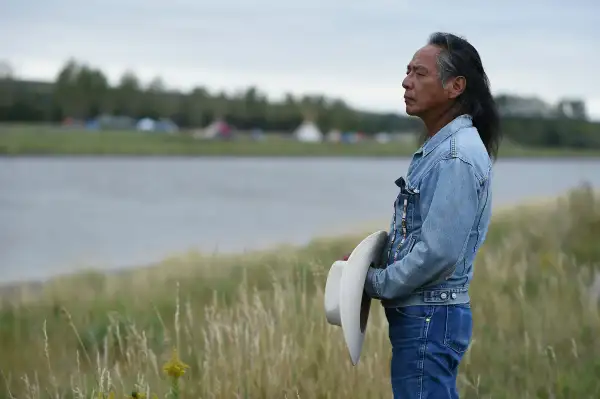The Dakota Pipeline Could Devastate Some of the Poorest People in America

For many members of the Standing Rock Sioux Tribe, the Dakota Access pipeline is just another hit against a group that’s been taking economic punches for generations.
The tribe has lived in North and South Dakota for hundreds of years, yet members have little say in how their ancestral land is used by the federal government. Meanwhile, sky-high unemployment rates and poverty levels have afflicted the Sioux for decades.
Now, tribe members and protestors say the pipeline could imperil the Sioux drinking water and the environmental health of the land they live on. (For more background information on the project, check out this explainer from TIME.)
Natives have the highest poverty rate of any racial group in the country, and the Sioux suffer especially startling statistics. More than 40% of the reservation's population has an income below the federal poverty line, compared to 13.8% for the U.S. on average. Indian Country Today put the unemployment rate at Standing Rock at a shocking 86% in 2013, and many of the Sioux are without electricity, running water, or complete kitchens, per a 2012 economic outlook report prepared by the tribe.
“They’re poor, they’re dirt poor,” said Richard Monette, a professor at the University of Wisconsin Law School and past president of the Native American Bar Association. “It’s unbelievable what we’ve done to them.”
Read Next: Want to Help the Standing Rock Sioux? Here's Where to Donate
The Standing Rock Sioux Tribe is part of the Great Sioux Nation, and its economy depends largely on farming and cattle ranching, according to the tribe's website, as well as two casinos owned by the Tribe. Almost 60% of those with full-time jobs are employed by the government.
"Social welfare programs such as Social Security Income, Temporary Assistance for Needy Families (TANF), and Supplemental Security Income (SSI)—comprise almost 30% of all income on the reservation," the report notes.
The sources of the reservation’s poverty are long and varied, but much of it can be traced to land ownership.
The Black Hills Gold Rush in the 1870s led to the forced cessation of some of the tribe’s land to the United States government, breaking peace treaties that had been signed by the Sioux and the government. (Notably, the Natives did not benefit from the discovery of gold in their sacred land.) Continuing that tradition, the federal government seized thousands more acres of land from the tribe in the 1950s and ‘60s in order to build dams across the Missouri River Basin.
That land, which had been used by the Sioux for farming and hunting, was flooded and destroyed, and the reservation never recovered from the economic toll, Monette said. According to MSNBC, hundreds of families were displaced, exacerbating poverty.
Read Next: What to Know About the Dakota Access Pipeline Protests
“That’s why the placement of this pipeline is so significant,” Monette said. It’s on land that the Sioux still consider theirs—given that, in their eyes, the federal government had no right to take it to begin with, and didn’t compensate them for it.
Nor does the tribe technically own the land they have left, The Atlantic reports; it is held in a trust by the federal government. That means the tribe has little leverage when dealing with massive companies like Energy Transfer Partners, the company building the pipeline. It's not as if they can buy the land the company wants to build on—they have no money. Relatedly, they can't develop the natural resources in "their" land to earn any income, they can't borrow against the land, and they certainly can't sell it.
And, as noted above, they have few other economic resources. Which brings us back to the pipeline.
As Naomi Schaefer Riley writes in the New York Post, the ranchers just off of the reservation who do actually own their land gave permission for the pipeline to be built—and they were paid for it. That's not an option for the Sioux.
That the Dakota Access pipeline is being built on land that used to be part of the Standing Rock reservation, under its main water source, and through its sacred sites is another affront in a long history of them. To add further insult, the pipeline was originally slated to be built north of Bismarck, but was moved further south after public outcry that a leak would destroy drinking water. That same criticism appears to be being ignored when it’s made by native people.
The Tribe was not consulted on the pipeline (another disrespect to a supposedly sovereign nation). Monette said if it had been, perhaps the state and Energy Transfer Partners could have worked with the tribe to build the pipeline through the reservation, rather than under the water supply, so that the Sioux could reap some of the tax benefits from the project. “Why should they be pure and money-less?” he asked.
